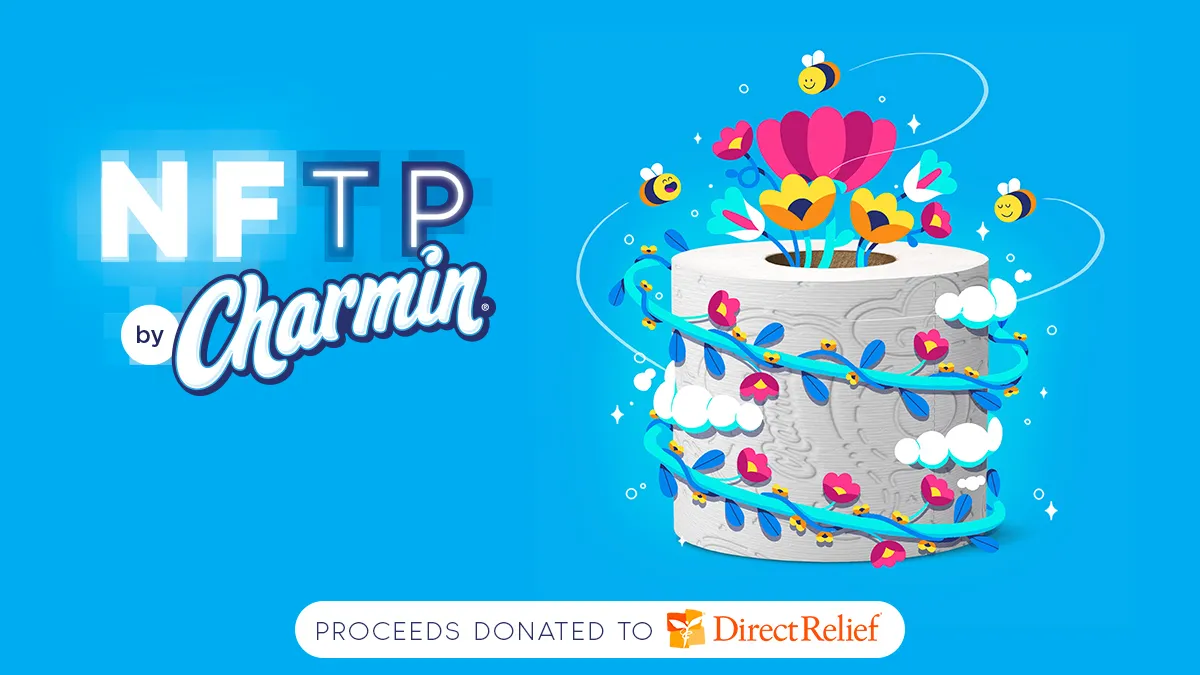Emerging technologies almost inevitably inspire marketers to consider how these latest innovations will change the way they do business. Nonfungible tokens (NFTs) are a buzzy topic currently capturing brands' attention as they experiment with the technology's marketing applications.
Gary Vaynerchuck, the serial entrepreneur who leads digital agency VaynerMedia, this week revealed his NFT project after weeks of teasing it on Twitter. The NFT collection, called VeeFriends, will give buyers three-year access to his VeeCon business and marketing convention as a "smart contract" he touts as a source of real value for the technology.
Vaynerchuck's announcement is the latest sign NFTs are gaining traction in the marketing community. An NFT is a form of cryptocurrency that acts as a certificate of authenticity for intellectual property, such as a digital artwork. The tokens are stored on a blockchain — a database that keeps a permanent record of digital transactions — and can't be duplicated or deleted like other kinds of digital files.
So far this year, the most common brand applications for NFTs have been to raise money for charity by selling virtual collectibles, to verify the authenticity of products and to offer digital passes to events as Vaynerchuck plans to do with VeeFriends.
"The first phase of using NFTs are by those that already had a collectability," said Nicole Penn, president of marketing agency EGC Group. "They're coming out with NFT-edition products."
"The first phase of using NFTs are by those that already had a collectability."

Nicole Penn
President, EGC Group
Making headlines
NFTs starting making headlines in March when a digital work by artist Mike Winkelmann, professionally known as "Beeple," sold for $69.3 million in an online auction. The sale was significant as the most expensive digital asset with an NFT ever sold, and the third-most expensive artwork sold by a living artist.
The auction drew attention to the technology that has been around for years, giving people a way to own one-of-a-kind digital collectibles. CryptoKitties, a game that lets people buy, collect, breed and sell virtual cats on the Ethereum blockchain network, was one of the first NFT applications to gain media attention with its 2017 release. A year later, Sony Pictures promoted the release of a children's movie by offering a set of digital trading cards with NFTs that guaranteed their authenticity.
Nike is an example of a company that could sell NFTs associated with its products, according to Penn. The sportswear giant in 2019 received a patent for "CryptoKicks," which was described as a way of issuing digital footwear that could enable collectors to sell, trade or store virtual collectables in a blockchain. Nike also saw the possibility to create new collectible designs by "breeding" two pairs of digital shoes, Footwear News reported. If it were to sell NFTs, Nike would join the design studio RTFKT in creating virtual versions of shoes for online collectors. The two-person startup in March sold more than 600 pairs of digital sneakers, netting the equivalent of $3.1 million in seven minutes. After raising $8 million this week in a funding round led by Andreesen Horowitz, RTFKT plans to expand and develop an online marketplace for its designs, WWD reported.
The demand for shoe NFTs may reflect the growth in sneakerhead culture, which has driven demand for limited-edition shoes that people buy and resell through marketplaces like StockX or GOAT. NFTs associated with products that people collect — whether trading cards or sneakers — are more likely to be marketable.
"What we're finding is that NFTs aren't for every brand," Penn said. "You have to have a customer base that would be interested as a buyer. There are always brands that jump on a bandwagon because it's trending, but if it's not going to create real value for them, an NFT might not work."
Preventing counterfeits, powering purpose
Luxury brands looking to leverage their exclusivity can use NFTs to authenticate their products and lessen the possibility of being mistaken for knockoffs. LVMH, whose luxury brands include Louis Vuitton, two years ago teamed with Microsoft to create a blockchain called Aura in order to use NFTs in tracking products and preventing counterfeits.
The system lets smartphone users scan a QR code on the label of LVMH products to verify its authenticity, based on data gathered through the supply chain. LVMH last month teamed with luxury brands Prada and Cartier to form the Aura Blockchain Consortium as part of an effort to crack down on fakes that are estimated to cost the luxury industry billions of dollars a year.
Amid the recent craze for NFTs, brands have experimented with them in other ways, such as auctioning digital artwork and donating the proceeds to charity. Procter & Gamble's Charmin last month sold several original digital artworks inspired by the toilet paper brand to raise money for Direct Relief, a nonprofit that provides emergency medical supplies resources to communities.
In a similar vein, Diageo tequila brand Don Julio this month celebrated Cinco de Mayo with a multichannel campaign that included an auction of an NFT for a digital artwork. The brand planned to give the proceeds to its newly formed Tequila Don Julio Fund, which supports charity groups. Taco Bell, Pringles and Dole Sunshine also have hosted NFT auctions for assets on mobile devices and other digital platforms.
If these early campaigns are any indication, NFT auctions may become a bigger part of marketers' efforts to engage consumers with their brands while raising money for nonprofits. In addition to using NFTs to authenticate products and as smart contracts, NFT applications are likely to expand with the broader adoption of blockchain technology and steady uptick in exclusive digital assets.






















